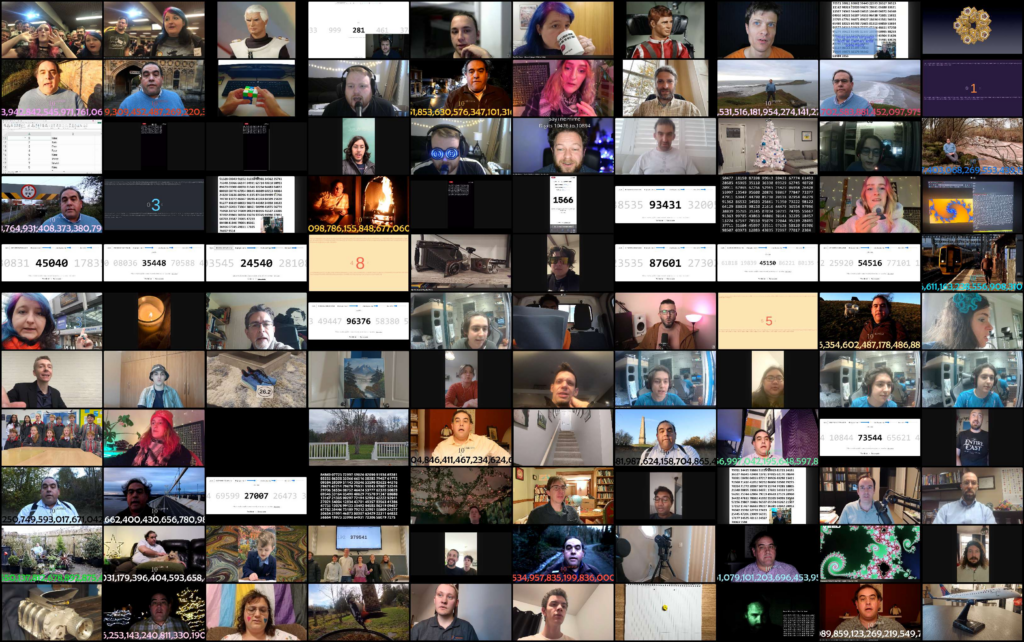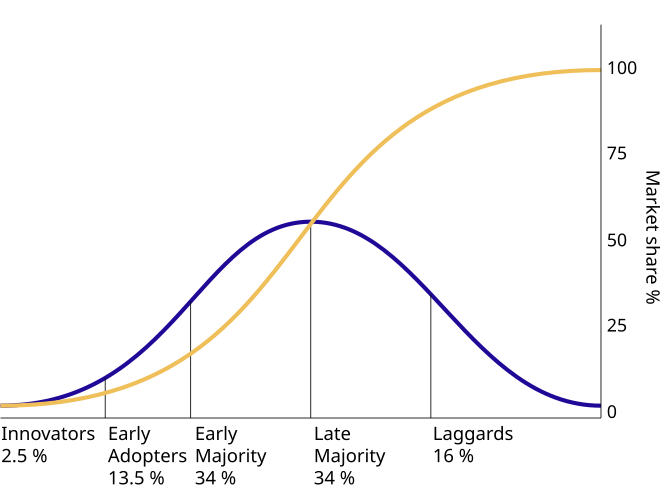Can humans say their largest prime number before they find the next one? After the discovery of the new Mersenne Prime, a community project aims to find out!
What is going on?
There’s a lot to love about prime numbers. They’re unruly, and hard to find – so when a new one enters the scene, there’s reason to celebrate! The behemoth Mersenne Prime 52 was discovered on October 12th, 2024 after an uncharacteristic six-year prime drought.
This fresh new prime number is 41,024,320 digits long – but is that really such a big number?
Yes! If you think of your classic large numbers: stars in the observable universe, atoms on Earth, possible games of chess, ways to shuffle a deck of cards, a googol… multiply them all together, and it would still be nowhere near the size of the new prime.
However, we can turn to time to give us a tangible sense of scale. If you were to speak at a rate of 2 digits per second, it would take 272 non-stop days to say the prime out loud. “Which is a long time… but not an impossible time!” says organiser, and author of this article, Ayliean MacDonald.
And so the Say The Prime challenge was launched, along with fellow maths communicators Katie Steckles (yes, that one) and Matthew Scroggs (yes, that one).
Say The Prime invites people (including you) to record themselves reading sections of Mersenne Prime 52 out loud. The number has been split into more manageable groups of 419 digits, resulting in just under 100,000 “chunks”. Each chunk takes roughly 3-4 minutes to speak, and is then uploaded to YouTube where it joins the rest of the chunks in a (soon to be lengthy) playlist.

Last weekend the playlist surpassed 100 videos, and now boasts a prime speaking time of 6 hours and 23 minutes. This means we’ve said over 80,000 digits of the prime, with contributions from people all over the world.
Unfortunately, this valiant effort has only resulted in 0.188% of the prime being read out loud. Did we mention it’s a very long number?

Humans vs Humans with Computers
With the recent advances in computing power which has been used to fuel the Great Internet Mersenne Prime Search (GIMPS), is this endeavour entirely futile? Since the advent of computers, the average length of time between discoveries of Mersenne primes has been 1 year and 10 months, giving us a benchmark to aim for. If we maintain the current rate, Say The Prime will be completed in a mere… 125 years – not quite hitting the mark.
But humans have shown that they are capable of immense output. There are more than 500 hours of content uploaded to YouTube every minute! If we redirected this human energy towards saying our largest prime number, the project would be complete in 13 minutes.
An alternative strategy could be to assemble a dedicated team of 274 Say The Prime enthusiasts, who need only say one chunk per day – and we’d be complete within the year! (Of course, by publishing this article in The Aperiodical, we expect the prime-saying rate to increase.)

But much like a chemical reaction, the adoption of new technology has been modeled to take an S-shaped curve. We are currently in the “innovators” phase of adoption – and once others see how much fun saying the prime is, there will be a rapid increase in the rate of those getting involved.
So how much fun is it?
The early adopters seem to be having a good time, adding their own unique flair to how they say the prime (and in some cases, just reading out the numbers, which is also fine). There have been speed-runners, who try to say their chunk as fast as they can; there have been people who complete tasks like solving a Rubik’s Cube or ironing a shirt whilst they say their chunk. Some have used relaxing whispers, while others have projected the prime outside on a blustery day; there have been many different languages and accents, digits rolled on dice, and even stenography practice. We’ve had prime from Grime, prime said at the same time, and prime with six consecutive 9s! The Aperiodical’s own Katie Steckles has also had a bit of fun spotting numbers to make up the digits:
We even got a group of fifth graders from The German School in Manhattan involved, after their teacher read an article about Say The Prime in an Austrian newspaper.
Student Lili had this to say: “Hopefully we get to say the prime before the new one comes out! The best way to manage that is for lots of schools to participate because they have lots of students. If we don’t make it… well the point is: we are counting on you to get your number and submit your video.”
Classmate Yaeli added, “This is such a cool project! I think other schools should also try! All you need to do is have fun.”
Why?
Listen to our young people: it’s just fun!
If you need a more philosophical rationale, consider the point humans stopped saying their prime numbers out loud. The first Mersenne Prime discovered by computers, which happened back in 1952, was a measly 157 digits long. Was it ever said out loud? Or was it relegated to the depths of a computer file? By saying our largest prime number out loud, we can come together as humans: to take part in something massive, and fully appreciate our mathematical achievements.
Of course there will always be detractors and those who ask “Why?”. As one internet commenter rebutted: “Because it’s possible. […] and as an art project, in my opinion, it’s actually quite funny… Fluxus! Dada! Surrealism!”.
It’s time to prime
Whether you consider Say The Prime to be a high art exploration of collective action, or just a fun nerdy way to spend 4 minutes when you’re bored, this is an opportunity to come together in celebration of maths. Leave the internet historians of the future wondering why YouTube was strewn with 100,000 videos of people saying seemingly random strings of numbers. There are only around 99800 chunks of the prime left up for grabs – will you join your fellow maths lovers and be part of this equally monumental and silly effort to Say The Prime?
p.s. Chunk 283 will feature a run of six 3s in a row – who will claim it?!
